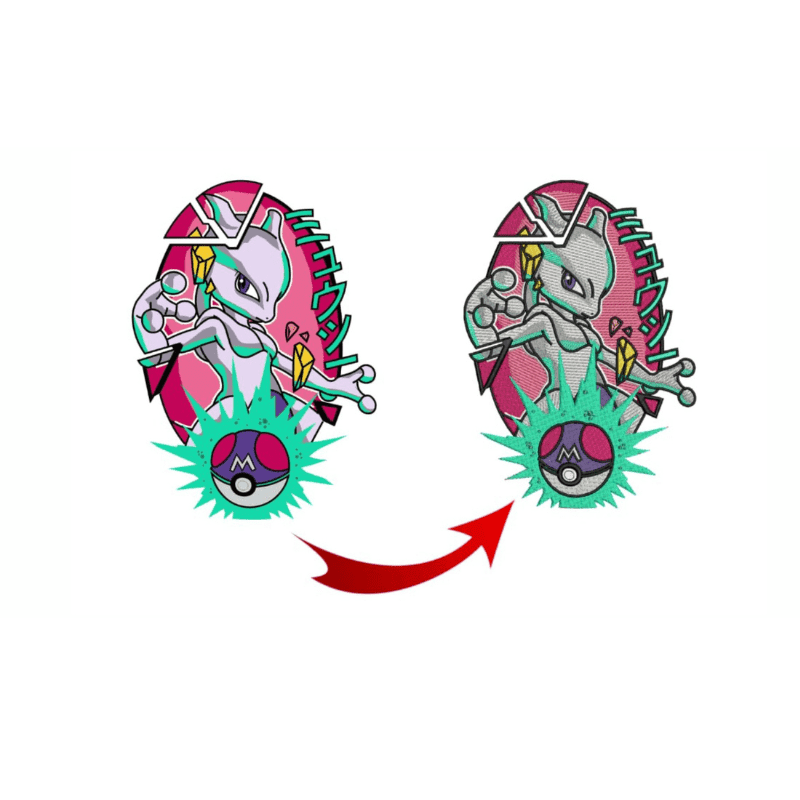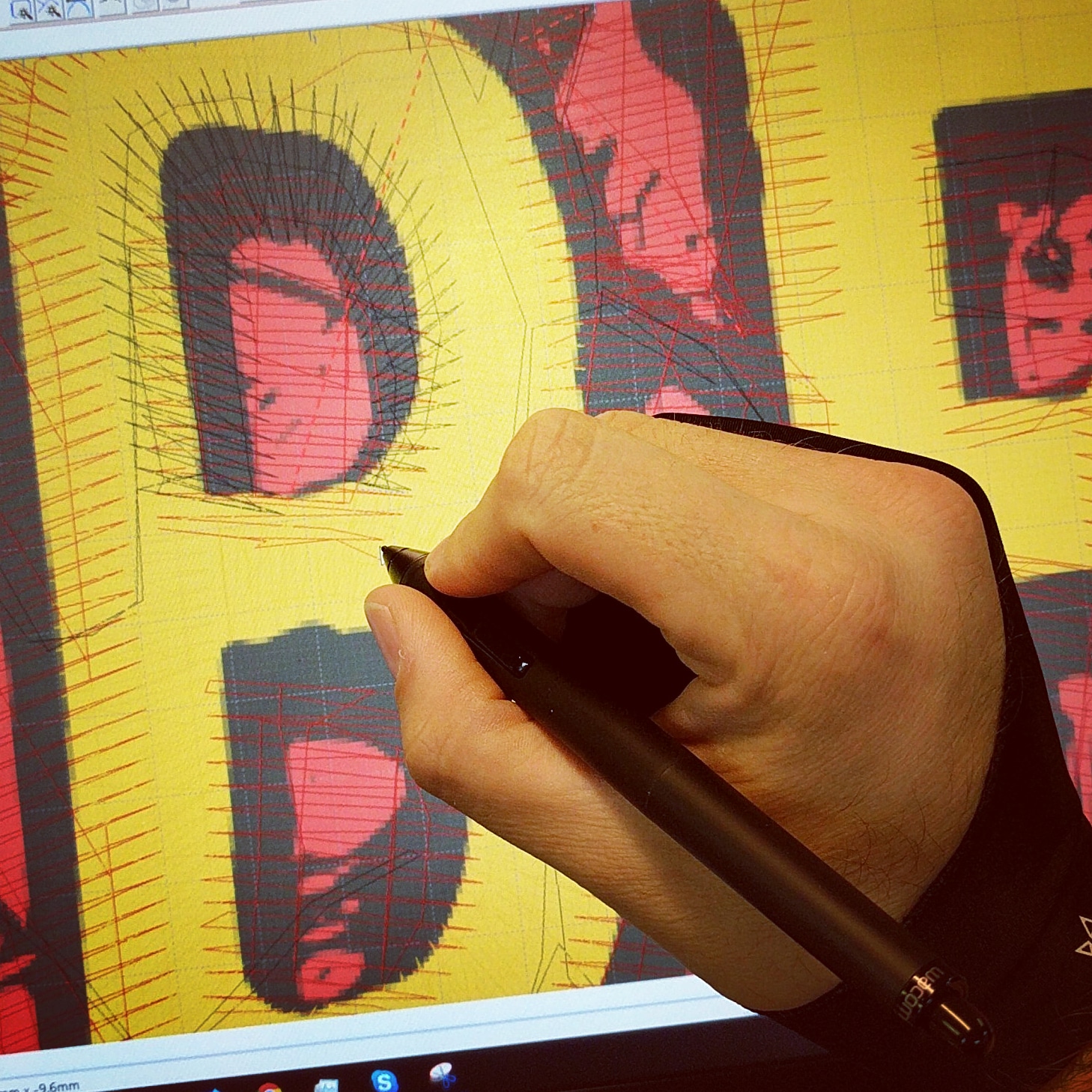Budget-friendly Digitizing for Embroidery: Precision and Detail
Budget-friendly Digitizing for Embroidery: Precision and Detail
Blog Article
Discover Various Kinds Of Embroidery Digitizing Techniques
Needlework digitizing has actually progressed significantly throughout the years, offering a myriad of strategies to bring styles to life in the electronic world. From the elaborate virtuosity of conventional hand embroidery digitizing to the precision of the punching technique, and the comfort of auto-digitizing software application, the alternatives are vast. Moreover, the realm prolongs to more advanced techniques like photorealistic needlework digitizing and the fascinating world of 3D embroidery digitizing. Each technique brings a distinct collection of possibilities and obstacles to the table, making the exploration of these techniques an engaging journey for those in the embroidery world.
Typical Hand Embroidery Digitizing
Standard hand needlework digitizing involves the process of transforming detailed hand-stitched styles into electronic styles for device embroidery. This strategy calls for skilled artisans to diligently evaluate the handcrafted layout and after that make use of specialized software program to recreate it in an electronic layout. Each stitch, color, and information has to be carefully translated to guarantee that the significance of the initial hand embroidery is protected in the electronic variation.
Among the key challenges of traditional hand needlework digitizing is capturing the ins and outs and subtleties of the handmade layout. Digitizing for Embroidery. Craftsmens need to have a deep understanding of different needlework methods, such as satin stitch, chain stitch, and French knots, to precisely duplicate these strategies in the digital world. Additionally, they require to have a keen eye for information to guarantee that the digital style keeps the exact same degree of creativity and craftsmanship as the original hand-stitched piece
Punching Strategy
To seamlessly transition from traditional hand needlework digitizing to the boxing method, artisans must currently focus on converting the elaborate electronic designs right into instructions that needlework equipments can interpret. The punching strategy involves utilizing specialized software program to produce electronic documents which contain commands for the needlework machine to follow. This process requires a deep understanding of not simply the style itself yet additionally the abilities and constraints of the embroidery maker.

Auto-Digitizing Software Program Programs
Needlework digitizing has actually been reinvented by the advent of auto-digitizing software application, providing craftsmens with innovative devices to convert electronic layouts into embroidery maker instructions effectively. Auto-digitizing software program programs utilize algorithms to evaluate digital photos or vector files and create embroidery designs automatically. These programs allow for fast and exact conversion of detailed designs right into stitch patterns, conserving time and initiative for embroiderers.
One of the key benefits of auto-digitizing software program is its user-friendly interface, making it available to both novices and skilled digitizers. These programs often consist of attributes such as stitch editing and enhancing tools, string shade matching, look at here now and the capability to sneak peek the last stitched layout. Furthermore, auto-digitizing software can deal with complicated layouts with several colors and elaborate information, producing top quality needlework data ideal for different garments and fabric projects.
While auto-digitizing software supplies convenience and effectiveness, it is essential for users to comprehend the restrictions of automated digitizing. Fine-tuning and hands-on adjustments might still be called for to attain the preferred embroidery quality, particularly when handling elaborate or one-of-a-kind layouts. By leveraging the abilities of auto-digitizing software program along with manual digitizing techniques, craftsmens can enhance their needlework digitizing procedure and develop spectacular stitched pieces.
Photorealistic Embroidery Digitizing
Using sophisticated electronic imaging techniques, achieving photorealistic lead to needlework digitizing has become a desired ability among modern craftsmens. This method includes transforming high-resolution photos into complex stitch patterns that very closely resemble the initial style, resulting in embroidery pieces that display natural information and deepness.
To accomplish photorealistic needlework digitizing, craftsmens need to possess an eager eye for information and an extensive reference understanding of just how different stitch types and densities can affect the last end result. By meticulously mapping out each shade and shade in the image, embroiderers can create a digital documents that guides the needlework machine to reproduce the subtleties of the original image precisely.
Photorealistic needlework digitizing is specifically popular in producing custom designs for garments, home decor, and art items where catching the essence of a picture or artwork is critical. This method allows craftsmens to change memories, landscapes, pictures, and elaborate art work into stunning stitched work of arts that showcase a mix of traditional craftsmanship and innovative innovation.
3D Embroidery Digitizing
With the advancement of digital imaging strategies in attaining photorealistic lead to needlework digitizing, the exploration of 'D Embroidery Digitizing' provides a new dimension to the intricacies of layout replication. 'D Embroidery Digitizing' describes the three-dimensional digitizing strategy that includes deepness and structure to embroidery styles, creating an extra practical and aesthetically appealing final item. This technique uses software program that simulates the result of light and shadow on the needlework design, improving its overall aesthetic influence.
Among the essential advantages of 'D Needlework Digitizing' is its ability to make designs look even more natural and vibrant. By adding depth to the needlework layout, the last product appears extra practical and fascinating (Digitizing for Embroidery). In addition, this strategy enables more imaginative flexibility in style implementation, allowing embroiderers to explore different textures and results that were previously challenging to achieve
Verdict

Report this page